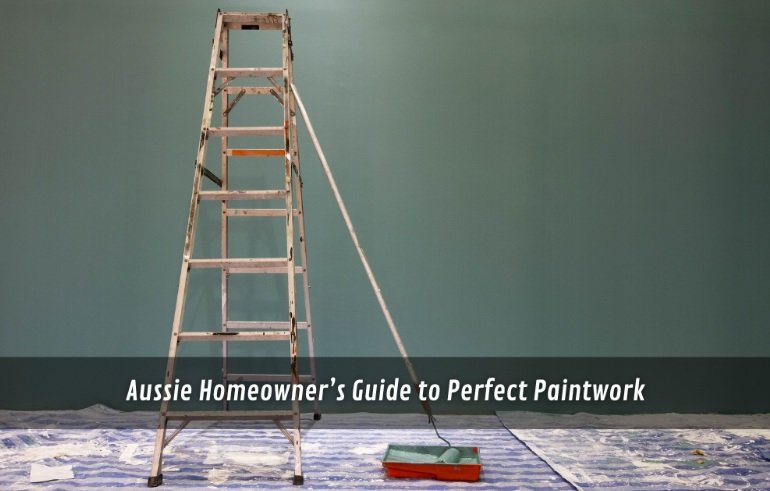
If you’ve ever stepped back from a freshly painted wall and thought, “Hmm… that’s not quite what I pictured,” you’re in good company. A perfect colour can still fall flat if the finish looks patchy or streaky. Truth be told, it’s the small choices — the way you load a roller, the angle of your brush — that separate an okay result from something you’ll proudly point out to visitors.
When I first started with professional house painting, I quickly learned it wasn’t just about having the right colour on the wall. It was about patience, preparation, and knowing the rhythm of the work. Over the years, I’ve had my fair share of drips, missed spots, and rushed jobs. Each one left me with another small lesson. And that’s the real difference — the more you paint, the more you notice how every little step counts.
Paint hides a lot… but it won’t hide a bad base. Dust, old flaking coats, or uneven plaster will all show through eventually. Taking the time to get a wall ready feels like extra work now, but it’s the bit that makes the finish look sharp a year later.
Here’s my non-negotiable checklist before the first dip of a brush:
I once decided to skip sanding on a spare room because “it’s only the guest room.” Within months, the paint started bubbling near the skirting boards. That “quick win” ended up doubling the job when I had to strip it all back.
In New South Wales, painting’s not always just a matter of picking up a brush and getting to it. Certain types of work — especially the bigger, trickier stuff — are best handled by someone who’s licensed to do it. Knowing about NSW painting licence requirements can save a lot of hassle later.
A licensed painter will typically:
I’ve seen neighbours fall into trouble when a casual cash job turned sour — no paperwork, no recourse. A quick check at the start can prevent that.
Painting gets frustrating quickly if your tools are fighting you. A decent brush will hold paint properly without dropping bristles, and a quality roller won’t leave lint stuck in the finish.
Some things I’ve learned the hard way:
After the first coat, I always walk the room slowly, shifting my angle to catch the light differently. You’d be amazed how a “perfect” wall can suddenly reveal patchy spots when the sun hits it side-on.
There’s a point in some projects where you realise it’s more than a weekend job. I’ve had this happen with tall ceilings and tricky feature walls — there’s only so far a step ladder and determination will get you. That’s where leaning on practical interior painting tips has helped me rethink my approach. Sometimes it’s a small tweak, like adjusting stroke direction or layering colours more subtly, that changes everything about the final look.
Once the last coat is on, it’s tempting to toss the brushes in water and call it a day. But a good finish has more to do with the cleanup than most realise. Things like removing masking tape while the paint’s still slightly tacky, or making sure wall switches go back without smudges, can really make it feel complete.
I’ve also noticed how much difference it makes to follow expert paint finishing techniques, the kind that focus on getting edges razor-sharp, blending colours at the joins, and keeping every line consistent. Those final, almost invisible details are what make the paintwork look like it’s always belonged there, rather than something that was rushed over a weekend.
Picking the right colour isn’t just about chasing trends — it’s about finding something you’ll live with happily for years. Neutrals have staying power, while bold shades can be brilliant for a feature but may need refreshing sooner.
Things I look at when choosing:
Years ago, I painted a lounge in deep forest green. It felt cosy at first, but eventually made the space feel like a cave. Within a year, I repainted it in a soft grey and instantly felt lighter walking in.
Paint doesn’t just dry at the same rate all year round. Weather plays a big role in how it behaves, especially outdoors. I’ve had paint dry too fast on a blazing hot afternoon, leaving visible lines, and too slow during a damp week, which made it tacky for days.
Better timing tips:
One neighbour of mine painted their fence in the late summer heat — by the time they got to the end, the first section already looked uneven.
Good paintwork will last, but only if you treat it right. Even high-quality paints can dull or mark over time without a little upkeep.
I stick to these habits:
It’s a small bit of effort that makes a big difference in how fresh a room feels.
Painting isn’t just a chore to tick off. Done well, it’s a way to make a space feel cared for and personal. The right preparation, timing, and finishing touches will always show in the end result. Whether you’re rolling up your sleeves or calling in help, the satisfaction of a smooth, even coat is worth every bit of effort it takes to get there.
How to Stop Water Pooling Around Your House
November 11, 2025How to Unblock a Sink Without Harsh Chemicals
November 7, 2025How Often Should You Clean Your Drains?
November 7, 2025Granny Flats in Australia: A Complete Guide to Building, Regulations, and Benefits
November 4, 2025Renovation Project Checklist: Must-Have Essentials for Home Improvements
November 2, 2025